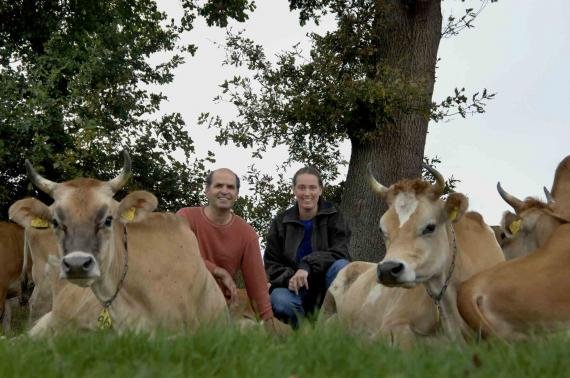<Photo: Van de Voort family with their Jersey cows>
The Remeker cheese produced by the farm has an edible rind of milkfat and moulds. ‘On the inside it’s Gouda cheese, but on the outside it looks like a French blue cheese,’ says Hettinga. He and some of his students are doing research on the development of fungi and bacteria in the cheese. Four Wageningen students have already graduated with theses on this topic.
‘In a normal cheese, bacteria are added to the milk,’ explains Hettinga. ‘During the ripening process, the bacteria convert lactose, fat and protein into aromas. To avoid getting mould on the cheese, it is covered with plastic. But farmer Van de Voort uses a completely natural process. To avoid killing the bacteria, he does not heat the milk but adds more bacteria and waits for fungi to start growing on the rind. It goes wrong occasionally, and if the wrong fungus or bacterium starts growing he has to throw out the cheese.’
Van de Voort got a subsidy a few years ago to enable him to get a fuller grasp of the natural ripening process. He built a new ripening room and brought Hettinga in to help. Hettinga and his students studied the development of the bacteria, fungi and aroma substances in the cheese in the new ripening room at 90 percent humidity. That was a success. ‘The bacteria and fungi grow faster with greater humidity, but the growth levels out after a few months. We now have a better understanding of the dynamics of the bacteria and fungi as the cheese is ripening.’
Van de Vorst is an unusual farmer, says Hettinga. He has about 90 Jersey cows, which produce relatively little milk, but their milk is exceptionally high in fats and proteins. He gives the cows special feed and sells his cheese to delicatessens and restaurants for 30 euros per kilo. ‘This makes his profit per kilo of milk five times higher than the average price of milk.’

